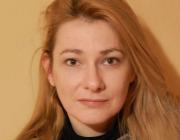Citation:
Abstract:
Living coccolithophores were collected in August 2001, at different photic depths (0-120 m), form 8 stations along a transect in the gulf of Korthi (Andros island). The analysis of the vertical distribution of coccolithophores certified high differentiation in density and diversity, as well as in the species composition at different depth levels. As a result, the photic zone is separated into three distinct sub-zones: upper (0-25 m depth), middle (45-60 m depth) and lower (90-120 m depth). The total cell density varies between 14.7x103 cells/l and 1.9x103 cells/l, and is usually higher in the upper and middle photic zone, while in the lower photic zone it gradually decreases. The highest species richness (max=34 taxa) was observed at the middle photic zone. Emiliania huxleyi, Rhabdosphaera clavigera and holococcolithophores preferred the upper photic zone. On the contrary, in the lower photic zone, the presence of Florisphaera profunda and Algirosphaera robusta becomes important, making up the typical deep community. Umbellosphaera tenuis is an additional important component of the summer heterococcolithophore nannoflora, especially in the middle photic zone. The studied coastal marine coccolithophore communities indicate that temperature and availability of nutrient concentrations are the most important controlling factors controlling their vertical distribution.

